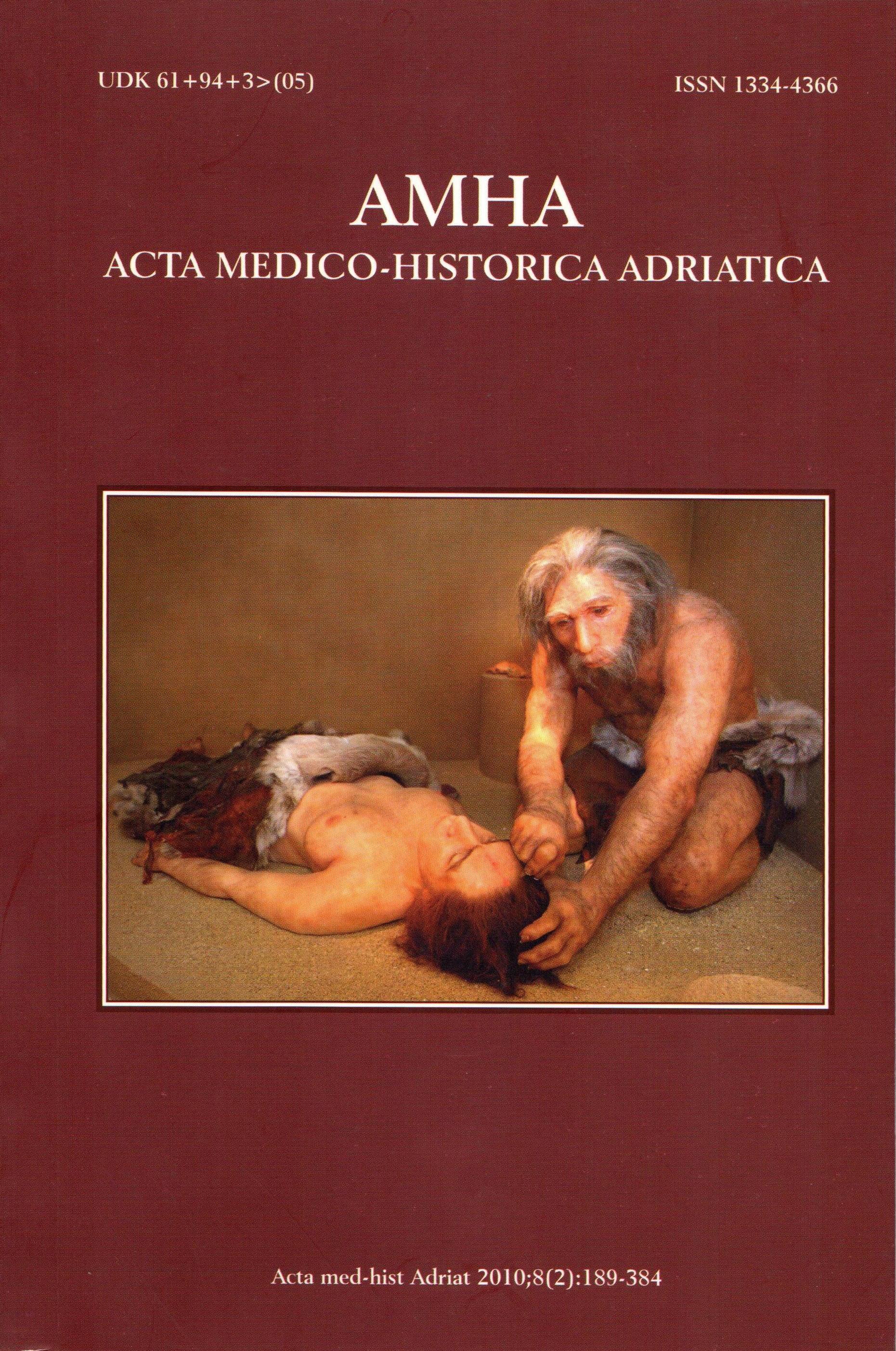ANAESTHESIOLOGY ACTIVITIES IN CROATIA FROM THE FIRST ETHER NARCOSIS IN ZADAR IN 1847 TO 2008
Keywords:
history of medicine, 19th and 20th century, anaesthesiology, intensive care, CroatiaAbstract
This is a short review of the historical development of anaesthesiology and intensive care in Croatia from its beginning to recent days (2008). Five months after the first public demonstration of ether anaesthesia in the USA, Ivan Bettini followed with the first ether anaesthesia in Zadar, on 13 March 1847. In the 19th century and the first half of the 20th century, the following doctors wrote about performing anaesthesia: Miroslav Čačković (in 1896), Dragutin Schwarz, Edo Šlajmer, Milan Crljenak, Antun Medanić, Božidar Lavrić, Simo Mučalov, Josip Vodenhal, Ante Drešćik, Radoslav Akerman, and Đurđa Klaić. The first endotracheal anaesthesia, was induced by Dr Risto Ivanovski at the military hospital in Zagreb in 1948. Croatian anaesthesiology started to develop in 1950 with the introduction of a one-year postgraduate course in Copenhagen, within the framework of a WHO programme, intended for underdeveloped and developing countries and overseen by the WHO Centre for Anaesthesiology. Croatian physicians attending this course were Andrija Longhino, Jagoda Bolčić Wickerhauser, Miroslav Hromadko, Mara Biondić, and Vlasta Lederer. The first specialists in anaesthesiology in Croatia were Đurđa Klaić, Ljubomir Ribarić, and Jagoda Bolčić Wickerhauser. In Zagreb, the first postgraduate courses in anaesthesiology were held in 1953, 1955, and 1957. In 2007, the anaesthesiology service in Croatia consisted of three Anaesthesiology and Intensive Care Clinics, three Anaesthesiology and Intensive Care Departments, 11 Anaesthesiology and Intensive Care Units, 13 Anaesthesiology and Resuscitation Services, and eight Anaesthesiology Units within Surgery Departments. It included 481 specialists in anaesthesiology and resuscitation and 172 general physicians specialising in anaesthesiology and resuscitation (totalling 653 in December 2007). This means that one specialist serviced 9,140 people, that is, 6,730 if we include GPs undergoing specialist training.. Anaesthesiologists in charge of intensive care units covered 364 beds.


